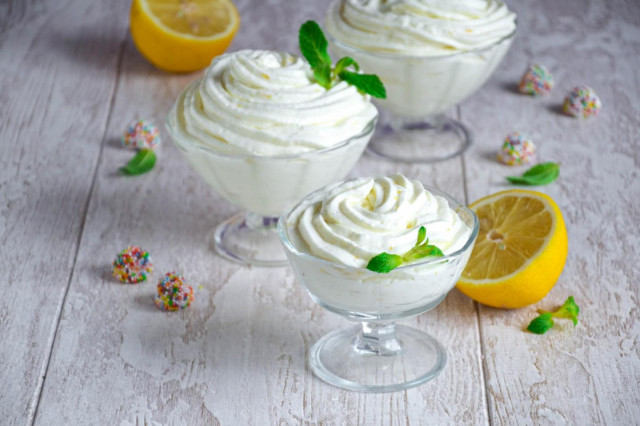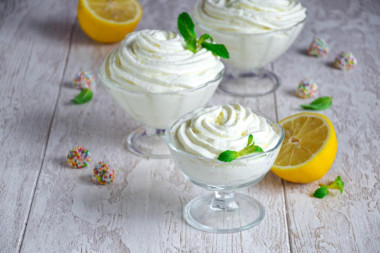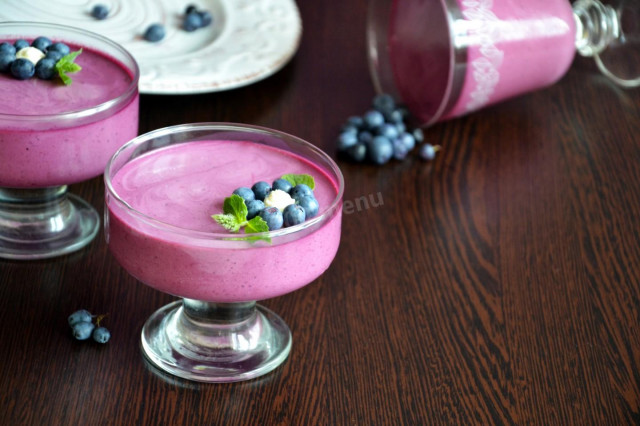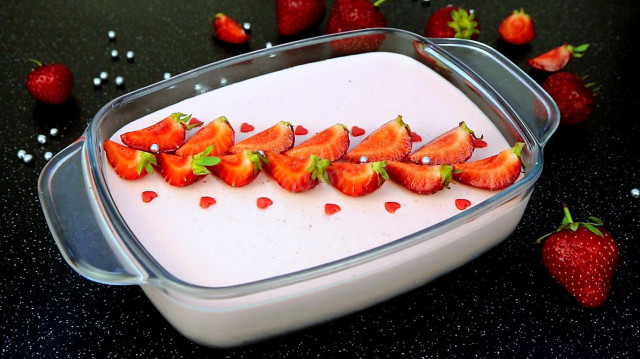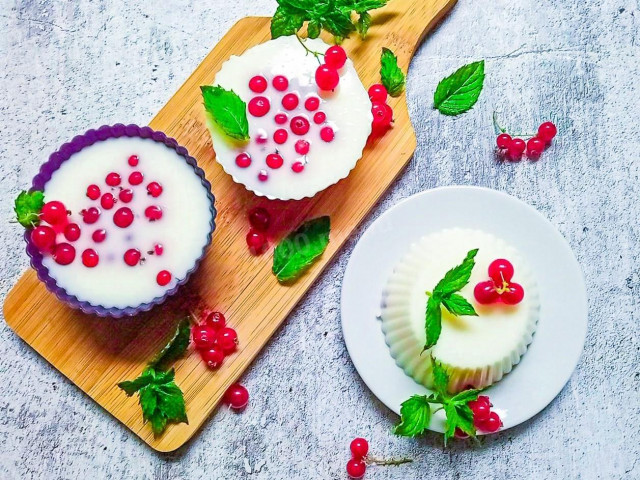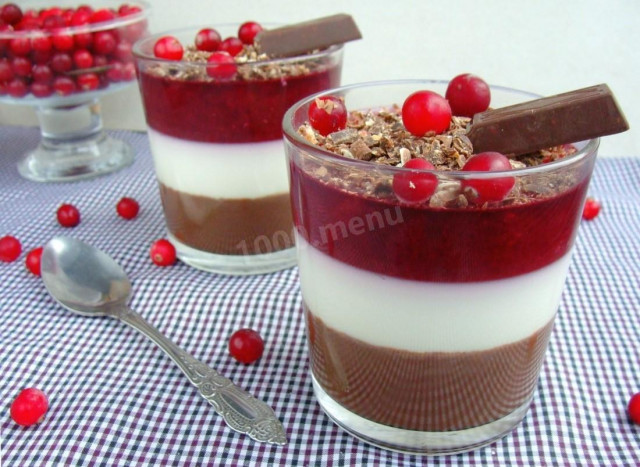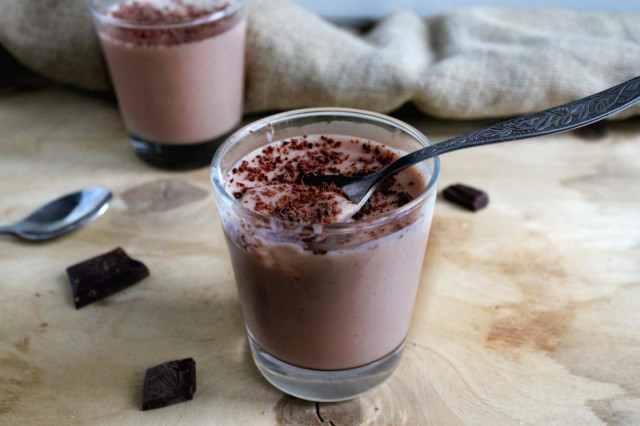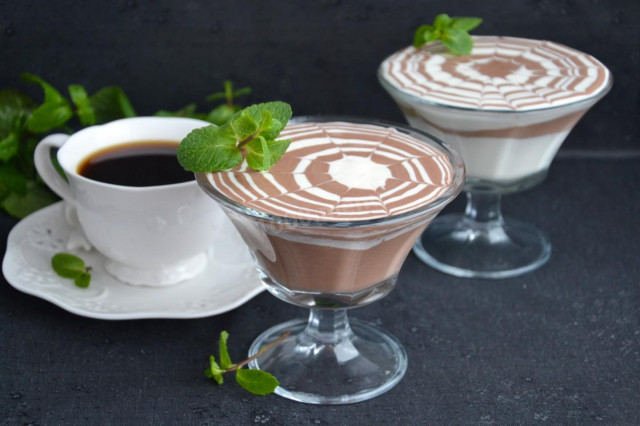Composition / ingredients
Step-by-step cooking
Step 1:
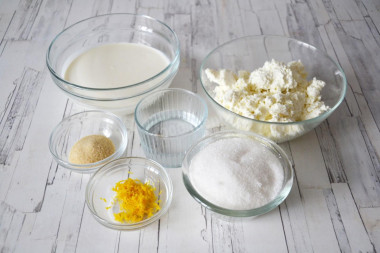
How to make cottage cheese mousse with gelatin? Prepare the necessary ingredients. Take cottage cheese about 5-9% fat content, and cream - at least 33% (they should be cold). Wash the lemon and pour boiling water over it. Then dry with napkins. Grate its zest on a fine grater.
Step 2:
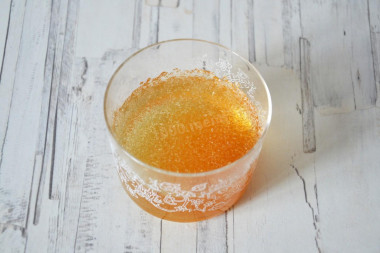
Soak gelatin in cold water and leave to swell for 15 minutes. Then dissolve the gelatin over low heat until its grains are completely dissolved. But since gelatin is very different, prepare it according to the instructions on the package!
Step 3:
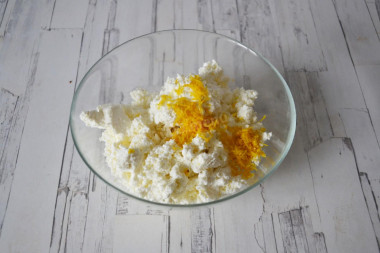
Combine cottage cheese with grated lemon zest in a separate bowl. Beat the resulting mass with a blender until smooth. Beat gently so that the mass does not fly apart.
Step 4:
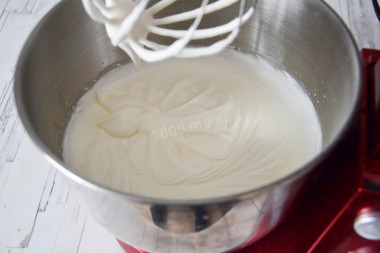
Pour cold cream into a suitable bowl and whisk with a mixer or blender into a fluffy stable foam, gradually adding sugar (you can replace it with powdered sugar).
Step 5:
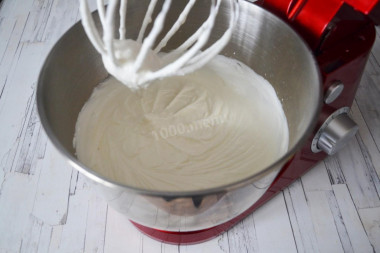
Without ceasing to whisk, pour hot gelatin into the whipped cream. Beat the mass until smooth.
Step 6:
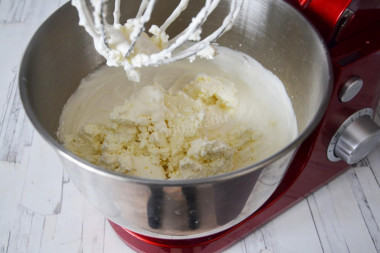
Gently mix the whipped cream into the curd mass. Mix everything with a whisk until smooth. But do not try too hard, so as not to lose the airiness of whipped cream.
Step 7:
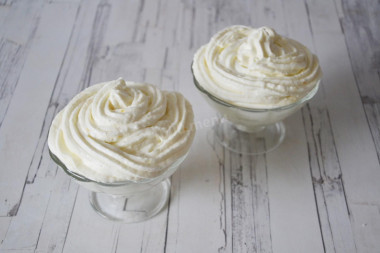
Put the curd-cream mass in creamers or molds and refrigerate for about 2 hours.
Step 8:
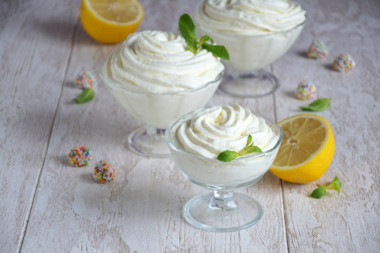
Delicious dessert is ready! It can also be used as a layer for a cake. Or to decorate the top and sides of the cake. The mousse is quite dense and with the help of a pastry bag, you can put any shapes out of it - they will retain their shape. Enjoy your meal!
Gelatin for mousse can be used not only powder, but also in plates. In this case, you need to fill the plates (take the same amount by weight as the powder) with cold water and leave for 10 minutes. Moreover, the colder the water, the less likely it is that the destruction of protein in gelatin will begin, and you will lose some of its strength. It is safest to use ice water. Squeeze out the swollen gelatin. Next, the pressed sheets should be put in a saucepan with boiling water (40 ml) and put it on a small fire.
Water with gelatin should be constantly stirred until the liquid changes viscosity. The finished mixture must first be cooled to about 45 degrees.
Instead of water, you can use part of the cream that is needed for whipping. But then your mousse will turn out to be more viscous, because there will be less liquid in it and the gelatin will "grab" all the ingredients more strongly.
How to whip cream correctly? It is important that the cream is fat, at least 33%. The whipping dishes and the cream themselves should be cold, keep them in the refrigerator for at least 1-2 hours. Beat with a mixer at minimum speed, gradually increasing the speed. How do I know if the cream is whipped enough? The creamy mass should retain its shape and not spread. At this point, stop whipping. Otherwise, the cream will turn into butter.
To make a dish using gelatin work, be sure to pre-soak the gelatin in cold boiled water. The colder the water, the better. Leaf gelatin can simply be put in a bowl of water. Before soaking the powdered gelatin, first rinse the dishes with cold water so that the crystals do not stick to the bottom. It is important to pour powdered gelatin with water, and not pour it into the water. Otherwise, lumps cannot be avoided. Then allow time for the gelatin to swell (the exact time is indicated on the package).
The swollen gelatin is heated to 70-80 degrees. It should never be brought to a boil!. At a temperature of 100 ° C, the mass becomes fibrous and viscous, collagen protein is destroyed and gelatin loses its jelly-forming properties.
Caloric content of the products possible in the composition of the dish
- Buttermilk - 36 kcal/100g
- Cream of 20% fat content - 300 kcal/100g
- Cream of 10% fat content - 120 kcal/100g
- Cream - 300 kcal/100g
- Cottage cheese of 40% fat content - 466 kcal/100g
- Cottage cheese of 20% fat content - 233 kcal/100g
- Cottage cheese of 18% fat content - 226 kcal/100g
- Cottage cheese of 10% fat content - 156 kcal/100g
- Low-fat cottage cheese - 75 kcal/100g
- Cottage cheese with sour cream - 260 kcal/100g
- Fruit cottage cheese - 147 kcal/100g
- Soft dietary cottage cheese - 170 kcal/100g
- Vitalinia cottage cheese - 64 kcal/100g
- Cottage cheese "morning" ( "danone") without sugar - 91 kcal/100g
- Cottage cheese - 156 kcal/100g
- Granulated sugar - 398 kcal/100g
- Sugar - 398 kcal/100g
- Gelatin - 355 kcal/100g
- Water - 0 kcal/100g
- Zest - 97 kcal/100g

